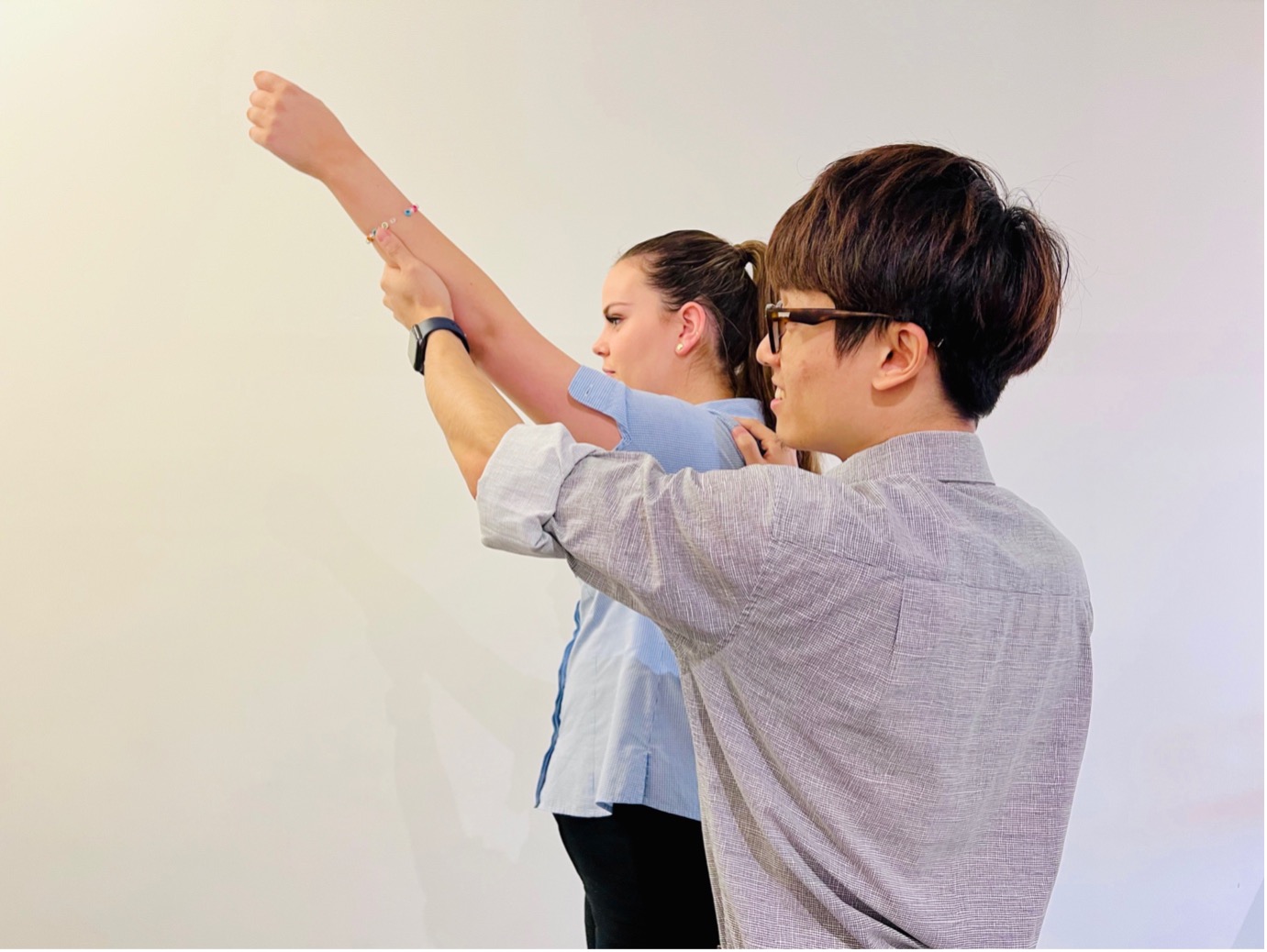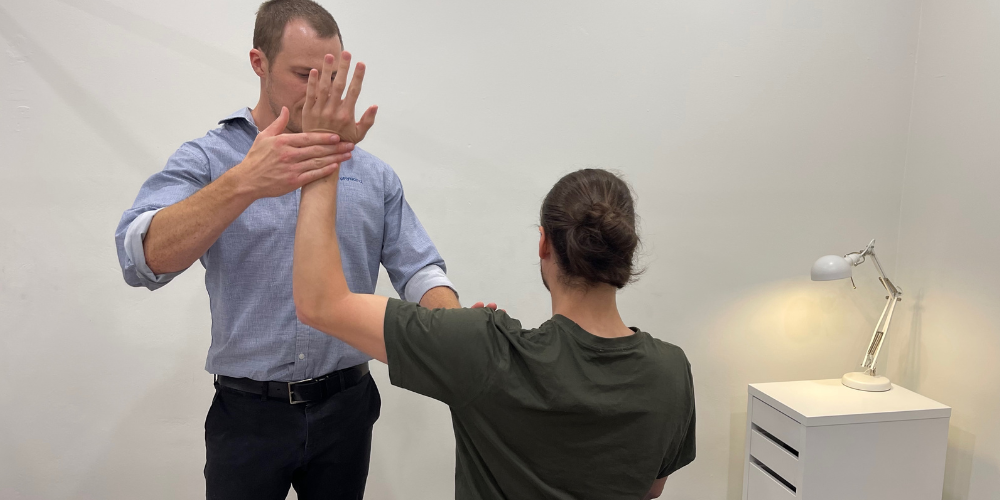Shoulder Pain | Is it Frozen Shoulder or Shoulder Bursitis?
Thursday, June 27, 2024
Do you know someone who needs shoulder pain relief because they’re getting pain when lifting their arm and shoulder pain at night? Are you wondering: Is it frozen shoulder? Is it shoulder bursitis? Differentiating between these common conditions will help ensure the best treatment and prognosis.

What does frozen shoulder feel like?
People with a frozen shoulder diagnosis & shoulder bursitis, will often feel:
- No clear mechanism of injury
- Pain that is severe & doesn’t seem to be relieved by anything
- Deep gripping pain sharp, pinching pain or a ‘blocked’ sensation which involves the whole shoulder & sometimes down the arm
- Reduced movement when using arm such as hanging out clothes, drying their hair, fastening their seat belt, getting dressed
- Difficulty sleeping due to night pain
- Worsening movement ability over a short period of time
Shoulder bursitis symptoms are:
Anterior/ lateral shoulder pain, i.e. front upper arm (deltoid), in general and when pressed
Sharp or pinching pain with overhead shoulder motions (past 90 degree of shoulder flexion and abduction)
Night pain, especially when lying on the affected side, but pain improved after modifying the sleeping position
What is the difference between frozen shoulder and bursitis?
A physical examination including hands-on testing, strength and stretch testing, by a trained professional, like the Physiotherapists at Physio Inq Engadine and Physio Inq Sutherland, will allow accurate diagnosis.
People with frozen shoulder will present with:
- Progressively worsening global decreases in shoulder range of motion, both actively and passively
- External rotation and abduction are mostly restricted, followed by internal rotation and flexion, extension is relatively free
- Severe night pain regardless of position
- Weakness during shoulder manual muscle testing, mainly limited by pain instead of true muscle weakness
- Inability to influence movement with manual or exercise therapy
People with shoulder bursitis will present with - Restriction and pain mainly in shoulder abduction & bringing the hand behind the back
- Disturbed sleep patterns when laying on affected side or rolling over in bed
- Often presented with rotator cuff dysfunction & weakness but may find capacity to use arm forcefully with arm close to the body
- May attribute an incident or event which started painful shoulder e.g fall, forceful pulling/pushing, increase in exercise activity
Why do I have shoulder pain?
Frozen shoulder is more often reported in people with these risk factors, in addition to the frozen shoulder symptoms:
- Prolonged immobility of the shoulder (e.g broken arm, shoulder dislocation), prior to the onset of symptoms
- Systemic diseases like diabetes, thyroid issues and cardiovascular disease
- Aged 40-60-year-old
- Female patient
Can Physiotherapy help shoulder pain?
Yes, seeing a Physiotherapist, such as the staff at Physio Inq Engadine and Physio Inq Sutherland, can assist with the relief of symptoms and long term management of conditions causing shoulder pain including:
- Frozen shoulder, adhesive capsulitis
- Shoulder bursitis, subacromial/subdeltoid
- Rotator cuff dysfunction
- Osteoarthritis
- Ligament injuries and sprains
- Labral tear
And more

What is the treatment for shoulder pain?
Gold standard treatment for the common conditions causing shoulder pain is physiotherapy management. Following expert testing and diagnosis, our Physiotherapists will recommend an individually tailored treatment program.
Frozen shoulder treatment
Research has found that physiotherapy intervention plus corticosteroid injection improves pain and functional limitations in the first three months. Physiotherapy intervention involves exercise therapy to improve/maintain shoulder range of motion, education regarding frozen shoulder, and manual therapy for symptoms relief. Frozen shoulder is a long-term ailment which can impact function for 18 months to 4+ years. Research shows that overall improvements are better with physiotherapy interventions compared to no treatment or injection therapy alone.
Shoulder bursitis treatment
Treatment involves education regarding aggravating factors and its corresponding coping strategies. Since shoulder bursitis is often associated with rotator cuff dysfunction, exercise therapy to improve rotator muscle strength and control, and the muscular coordination of the arm & trunk, will be essential.
Prognosis has been shown to be positively influenced with physiotherapy interventions.
Shoulder pain is a common issue treated by Physiotherapists. At Physio Inq, our Physiotherapists will be able to do a thorough testing and diagnosis, as well as provide gold standard treatment to help you live a life with less limits.
Contact us today to book your consultation.


